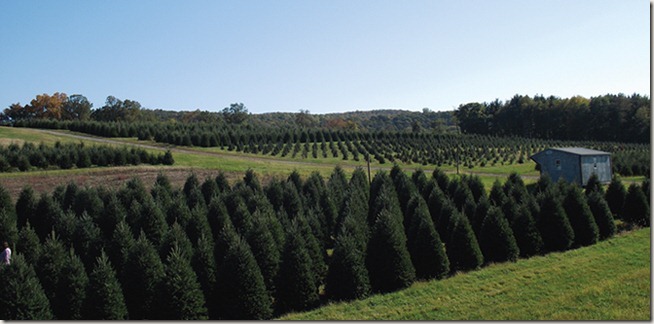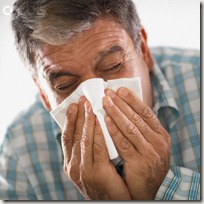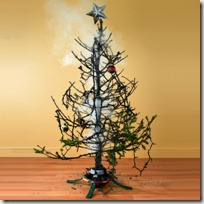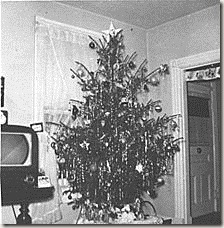Myths, urban legends, misperceptions and sometimes outright lies. We know there are some crazy things that people have been told about Real Christmas Trees over the years. And this has led to a large number of confused consumers. While many of these myths can be traced back to the fake tree industry, many are like urban legends … they just sort of exist and nobody really knows how they started.
Now, NCTA is launching the “Great De-Myth-ification Campaign” with its 10 Biggest Myths About Christmas Trees, designed to provide straight-forward answers and facts in a simple, compiled list. The top 10 list is culled from emails received by consumers, plus questions by news media and messages on blogs and such. Each year, NCTA receives more than 2,000 inquiries from the public, so we have a pretty good feel for what people think about Christmas Trees. Here are the 10 biggest myths, in no specific order:
MYTH #1: Real Christmas Trees are cut down from forests.
BUSTED: Seriously, do people still believe this? To be completely accurate, in a few locations around North America, the Forest Service sells permits for people to harvest wild trees. They do this in places to create fire breaks. But it’s a very tiny percentage of all trees used. Most trees come from a farm where someone plants them. And each year, growers plant one to three seedlings for each tree harvested.

MYTH #2: You save a tree by using a fake tree.
BUSTED: This is obviously tied to Myth #1, and also directly attributable to the fake tree industry. We’ve got copies of ads for fake trees that say exactly that: “Save a tree." Of course, this is false, because trees are a crop. They are planted by farmers to be used specifically as Christmas Trees. Close to half a billion trees are currently growing on tree farms in the U.S. alone. The really ironic part of the ad for the fake tree is one of the selling points is that it comes in a sturdy cardboard box. Ummm, how exactly is that saving a tree?
MYTH #3: Real Christmas Trees aggravate allergies.
BUSTED: Often, we get emails and inquiries from news media asking if there is a type of Christmas Tree that won’t bother a person’s allergies. We’ve collected sources of information both about trees and allergies and share these with people.
Sources include the National Institute of Environmental Health Science (NIEHS) and the American Academy of Allergy, Asthma & Immunology (AAAAI). So it’s not just “the Christmas Tree people” saying that the farm-grown tree itself is not the culprit.
 A quick summary of the sources we have found are that while it’s possible that a person may be allergic to tree pollen or even tree sap, it’s not as widespread as many believe. We have read that in rare cases, people can have an allergy to certain species of tree sap.
A quick summary of the sources we have found are that while it’s possible that a person may be allergic to tree pollen or even tree sap, it’s not as widespread as many believe. We have read that in rare cases, people can have an allergy to certain species of tree sap.
As for pollens, which certainly can be an allergen to people, a Real Tree itself is unlikely to produce pollen during December, and even if it did, pollens from pines are not a known allergen. According to the NIEHS of the 50,000 different kinds of trees, less than 100 have been shown to cause allergies. Most allergies are specific to one type of tree.
But being outdoors for years in the field, a Christmas Tree can collect pollens, dust, mold or other allergens. Of course, so can the artificial tree stored in the attic or basement. Whether you use a fresh Christmas Tree from a farm, or an artificial tree stored in a box, if you have sensitive allergies to dust, molds, etc., AAAAI recommends you spray the tree down in the yard with a hose before putting up. Let it dry completely before bringing indoors.
Resources we have found pertaining to holiday allergy prevention include: www.aaaai.org/media/news_releases/2004/11/111204.stm
www.hoptechno.com/book46.htm
MYTH #4: It’s better to use a fake tree because you can re-use it each year.
BUSTED: That’s a very short-sighted perspective. According to research, most fake trees are only used 6 to 9 years before they’re disposed. Even if you would use one for 20 years or more, it will eventually be thrown away and end up in a landfill. And unlike Real Trees, which are biodegradable and recyclable, fake trees are always a burden to the environment.
 MYTH #5: Christmas Trees are a fire safety hazard and frequently catch on fire.
MYTH #5: Christmas Trees are a fire safety hazard and frequently catch on fire.
BUSTED: You’d certainly think so by watching the local “Action News” team on TV. Each year, many of them show a dramatic image of a tree bursting into flames, intending to scare people into watching the news. And the anchor/reporter will say, “If you get a Christmas Tree, this could happen to you …” The reality is, a tree being accidentally ignited is EXTREMELY rare. As in 0.0004%. And those images of trees burning? They’re often aided by gasoline or lighter fluid. Don’t believe it? Just watch this…
MYTH #6: Real Trees cost too much.
BUSTED: Like anything else, you can find a wide range of prices, and spend what you want to spend. It all depends on what you’re looking for in a tree. Prices vary by many variables including: location of retail lot, where the tree was harvested, species, size, grade, who’s selling it and even sometimes day of the week. The bottom line is, you can spend $15 to over $200 on a tree in many places.
My favorite part is when fake tree people try to use this as a selling point. “You can get your investment in a fake tree back in as little as 3 years…blah, blah.” That’s called “funny math” where I’m from. If I spend $20 on a Christmas tree from a farm each year and you spend $300 on a fake tree, you’d have to use it for 15 years (way past the average) before I will have spent the same amount as you.
MYTH #7: Fake trees are fireproof.
BUSTED: Um, no, they’re not. They catch on fire every year. According to a report from the National Fire Protection Association, 28% of home fires involving a Christmas Tree were a fake one.
MYTH #8: Real Christmas Trees have pesticides and chemicals on them.
BUSTED: Myths such as this often get a foothold due to the disconnect that most people have with agricultural practices. Christmas Tree farmers do not use chemicals in a "harmful" manner. Chemicals are used only when needed and only according to the specified instructions and regulations of the EPA, the USDA and the FDA. Christmas Tree farmers live on their land and raise their families there. They would not engage in an activity that would put their families, employees or the people they sell their product to in harms way. To suggest otherwise is at best uninformed, and at worst, offensive.
There has never been a scientific research article suggesting that harmful levels of chemical residue exists on Christmas Trees, and in fact there have been studies looking for it. On the flip side, there have been studies showing a potential health danger of lead dust coming from plastic trees. The state of California requires a warning label on fake trees and wreaths. Watch this clip
MYTH #9: Real Christmas Trees end up in landfills.
BUSTED: Christmas Tree recycling programs are available nationwide, and many are quite creative. A farm-grown Christmas tree is 100% biodegradable, so it can be used for all kinds of things in nature, from mulch to erosion control. Fake trees?….see Myth #4 above. People often lament the sight of Christmas trees at the curb after Christmas…but they don’t realize that many communities have curb-side pick up as part of their recycling program. They’re not "being thrown in the trash" or ending up in landfills. They’re waiting to be put into the recycling program.
MYTH #10: Real Christmas Trees are a hassle and a mess.
BUSTED: It’s all relative. The first thing to ask someone if they say “I don’t want a Real Tree because I might have to vacuum up needles” is this: Does that mean you don’t vacuum normally? I mean, vacuuming should be a regular household chore all year long. So what if the tree drops some needles – you’re going to vacuum anyway right?….RIGHT?
Second, who says it has to be a hassle? (Hint: the fake tree people.) There are many places to buy a tree and all offer something a little different. If you want to spend a lot of time with family or friends getting your tree and have some entertainment, go to a Choose & Cut farm. If you want a huge variety of trees, both species and sizes, go to a specialty lot. If you want to support your community organizations in the process, buy one from a nonprofit selling them as a fundraiser. If you just want a tree quick and easy, then go to a lot designed for that. If you want to just point and click and have your tree delivered to your front door, then buy one online. Bottom line, don’t let someone tell you it’s a hassle, because you can decide how much time to spend getting a tree.
Third, the hard goods used with a farm-grown tree have come a long way. There are many different styles and types of tree stands…pick one that’s easy for you, as long as it holds enough water. There are funnels, cleverly designed to blend into the tree, that make adding water easier. I have a round mat with a waterproof backing to put under my stand so any water drops don’t stain my floor …it cost me like four bucks or something.
 You may often hear it’s a hassle to water a farm-grown tree every day. Really? That takes, what…an extra 25 seconds per day? Sheesh, get real, no pun intended. I spend more time than that making my picks in the weekly office football pool.
You may often hear it’s a hassle to water a farm-grown tree every day. Really? That takes, what…an extra 25 seconds per day? Sheesh, get real, no pun intended. I spend more time than that making my picks in the weekly office football pool.
It’s all relative. The time invested in buying and maintaining a farm-grown Christmas tree is nothing compared to what you get out of it. A good feeling. Memories. A home that “smells” like Christmas. Knowledge that you made a good environmental choice. That’s not a hassle, that’s a blessing.
Source: http://www.christmastree.org
